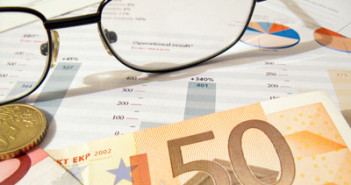EUR/USD continues its impressive rally, as the pair trades in the mid- 1.38 range in Wednesday’s European session. The euro has now gained about 160 pips this week against the sagging dollar. On Wednesday, Federal Reserve minutes indicated that policymakers discussed interest rate levels but did not reach any decisions regarding a rate hike. On Thursday, French and Italian manufacturing numbers fell short of their estimates. Today’s highlight is US Unemployment Claims. The markets are expecting an improvement in the upcoming reading.
Here is a quick update on the technical situation, indicators, and market sentiment that moves euro/dollar.
EUR/USD Technical
- EUR/USD settled down in the Asian session, trading close to 1.3850. In European trading, the pair has posted modest gains.
Current range: 1.3830 to 1.3895.
Further levels in both directions:Â Â 
- Below: 1.3830, 1.38, 1.3740, 1.37, 1.3650 and 1.3560, 1.3515 and 13450.
- Above: 1.3895, 1.3940, and 1.40.
- 1.3830 has switched to a support line following gains by the euro. The round number of 1.38 follows.
- On the upside, 1.3895 is the next resistance line.
EUR/USD Fundamentals
- 6:45 French Industrial Production. Exp. 0.2%. Actual 0.1%.
- 6:45 French CPI. Exp. 0.6%. Actual 0.4%.
- 8:00 ECB Monthly Bulletin.
- 8:00Â Italian Industrial Production. Exp. 0.2%. Actual 0.1%.
- 12:30 US Unemployment Claims. Exp. 314K.
- 12:30 US Import Prices. Exp. 0.2%.
- 14:30 US Natural Gas Storage. Exp. 15B.
- 17:01 US 30-year Bond Auction.
- 18:00 US Federal Budget Balance. Exp. -76.5B.
*All times are GMT
For more events and lines, see the Euro to dollar forecast.
EUR/USD Sentiment
- Fed undecided on interest rate hike: Wednesday’s release of the Federal Reserve minutes may have been highly anticipated, but as it turned out, there wasn’t much to justify all the excitement. Policymakers expressed concern about speculation over a possible rise in interest rates, but didn’t say when the central bank might change its current monetary policy. Under its QE program, the Fed is purchasing $55 billion in assets every month. There have been three tapers to QE so far, and the Fed chair Janet Yellen has said that the Fed plans to wind up QE late in the year. However, if there are any setbacks on the inflation or employment fronts, the Fed could be forced to delay further tapers. As the tapers are dollar-positive, any delay would be bearish for the greenback
- Eurozone numbers slide: The manufacturing sector continues to be a weak spot for the Eurozone. French Industrial Production posted a paltry gain of 0.1%, while the Italian release looked even worse, posting a decline of 0.5%. Both readings missed their estimates. Meanwhile, Germany’s trade surplus narrowed in March, dropping to EUR15.7 billion, its smallest surplus since July. The weak reading ended a string of solid German releases last week, as Retail Sales, Unemployment Change and Factory Orders all beat their estimates. As Germany is the Eurozone’s largest economy, the euro is sensitive to German data, and recent positive data has helped the euro trade at high levels.
- Ukraine crisis worsens: Tensions between the US and Russia continue to heat up over the Ukraine. On Monday, pro-Russian demonstrators took over a government building in an industrial city in the east of the country and declared their independence. Russia has warned the Ukraine not to react with force, while the US has accused Russia of continuing to foment unrest in the Ukraine ahead of elections in May.
- ECB says non-conventional options available if needed: While the ECB did not make any policy changes last week, the accompanying statement and press conference by Draghi were dovish: QE and a negative rate are on the table. On Tuesday, ECB policymaker Yves Mersch said that ECB officials were working on a QE scheme in order to combat deflationary pressures, but added that there was no immediate need for such a program. Meanwhile, Bundesbank President Jens Weidmann said that monetary policy alone will not solve the Eurozone’s economic problems, and called on political leaders to implement fiscal and other reforms.



